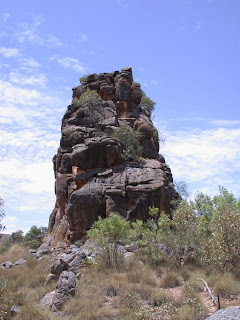Tuesday, September 2, 2008
Monday, September 1, 2008
Final work, assigment 2
Prime
Wednesday, August 27, 2008
Assigment Computer graphics 2
For second assignment I chose Earth song by Michael Jackson. Here We can see the music video
Monday, May 5, 2008
What is Global Warming?

The Intergovernmental Panel on Climate Change (IPCC) was established in 1988 by the World Meteorological Organization (WMO) and the United Nations Environment Programme (UNEP). The IPCC conference in Rome 1995 concludes that there are now clear signs of man-made climate changes, and that pollution from our cars, trucks, factories and power plants is a cause of it.
The figure below show the current global temperature and the future predictions. You may also read more about these scary facts and statistics from NCDC, including the increasing tornado trends and the above average rain-falls.
NASA scientists have announced that 1995 was the hottest year on record. The year saw killer heat waves from Chicago to Moscow to parts of India, a record number of tropical storms in both the Atlantic and the Pacific, and resurgent tropical diseases, like dengue fever. Dengue fever, a painful life-threatening disease endemic to tropical regions, broke out on the Texas border in the fall of 1995. (See also The National Climatic Data Center (NCDC), which is the world's largest active archive of weather data.)
Expected consequences of increased greenhouse effect are many. 1996 began with devastating snow storms and floods along the East Coast, a major heat wave on the West Coast and aberrant weather patterns in the Heartland of the United States.
National Oceanic and Atmospheric Administration (NOAA) scientists report that these weather extremes, even the snow storms, are consistent with what global climate change is likely to bring.
Here is an article on President Clinton calling for steps in curbing global warming.
What is the Solution to Global Warming?
One possible solution is to capture and store CO2 - a byproduct of burning fossil fuels - in underground storage.
Dr. S. Julio Friedmann, Lawrence Livermore National Laboratory held a talk at PARC (Palo Alto Research Center) about this topic on April 12, 2007. Here is a quick summary of his talk:
The carbon capture and storage is complete mishmash of economic, technological and political factors. Geological storage of CO2 is the cheapest form of dealing with pollution from burning fossil fuels.
CO2 capture and storage costs about $30 per ton to store CO2 under the ground, and it can deal with 15-50% of the world's CO2 emission problem..
Prof. Friedman showed several pictures and charts from a Norwegian oil-platform that has been using CO2 recapture and storage for 10 years. He said there is a $50/ton tax on CO2 emissions, so the Norwegian government is doing the right thing to prompt the oil company to take action to store the CO2.
There is another large scale CO2 project running in Sleipner in the Norway sea, Weyburn in Canada and Algeria (by oil company BP).
Forestation (planning and growing trees etc) is more expensive that geological CO2 capture/storage. Forestation cost around $50/ton of CO2 capture and storage.
China builds about 2 new coal power plants per week, and they are using 1960s technology!!!!
The USA has more than 100 new coal burning plants ready to be approved and built - as of year 2007 !!!!!
Hydrogen fuel is the cheapest energy alternative - even when burning fossil fuels to generate hydrogen and the use of CO2 recapture technology.
Current CO2 technology does not need any new technology to be invented or proven - and it costs about US $30 per ton of CO2 for capture and storage. Some US companies are talking about several new technologies that will lower this cost even more.
California has a new law that stops any power company outside of California to sell electricity to California without being certified low-emission power plants.
Many good things have started to take place around the world. Also, California is leading the world in technology, political and regulatory framework to deal with CO2 storage and capture, and it is an excellent
The figure below show the current global temperature and the future predictions. You may also read more about these scary facts and statistics from NCDC, including the increasing tornado trends and the above average rain-falls.
NASA scientists have announced that 1995 was the hottest year on record. The year saw killer heat waves from Chicago to Moscow to parts of India, a record number of tropical storms in both the Atlantic and the Pacific, and resurgent tropical diseases, like dengue fever. Dengue fever, a painful life-threatening disease endemic to tropical regions, broke out on the Texas border in the fall of 1995. (See also The National Climatic Data Center (NCDC), which is the world's largest active archive of weather data.)
Expected consequences of increased greenhouse effect are many. 1996 began with devastating snow storms and floods along the East Coast, a major heat wave on the West Coast and aberrant weather patterns in the Heartland of the United States.
National Oceanic and Atmospheric Administration (NOAA) scientists report that these weather extremes, even the snow storms, are consistent with what global climate change is likely to bring.
Here is an article on President Clinton calling for steps in curbing global warming.
What is the Solution to Global Warming?
One possible solution is to capture and store CO2 - a byproduct of burning fossil fuels - in underground storage.
Dr. S. Julio Friedmann, Lawrence Livermore National Laboratory held a talk at PARC (Palo Alto Research Center) about this topic on April 12, 2007. Here is a quick summary of his talk:
The carbon capture and storage is complete mishmash of economic, technological and political factors. Geological storage of CO2 is the cheapest form of dealing with pollution from burning fossil fuels.
CO2 capture and storage costs about $30 per ton to store CO2 under the ground, and it can deal with 15-50% of the world's CO2 emission problem..
Prof. Friedman showed several pictures and charts from a Norwegian oil-platform that has been using CO2 recapture and storage for 10 years. He said there is a $50/ton tax on CO2 emissions, so the Norwegian government is doing the right thing to prompt the oil company to take action to store the CO2.
There is another large scale CO2 project running in Sleipner in the Norway sea, Weyburn in Canada and Algeria (by oil company BP).
Forestation (planning and growing trees etc) is more expensive that geological CO2 capture/storage. Forestation cost around $50/ton of CO2 capture and storage.
China builds about 2 new coal power plants per week, and they are using 1960s technology!!!!
The USA has more than 100 new coal burning plants ready to be approved and built - as of year 2007 !!!!!
Hydrogen fuel is the cheapest energy alternative - even when burning fossil fuels to generate hydrogen and the use of CO2 recapture technology.
Current CO2 technology does not need any new technology to be invented or proven - and it costs about US $30 per ton of CO2 for capture and storage. Some US companies are talking about several new technologies that will lower this cost even more.
California has a new law that stops any power company outside of California to sell electricity to California without being certified low-emission power plants.
Many good things have started to take place around the world. Also, California is leading the world in technology, political and regulatory framework to deal with CO2 storage and capture, and it is an excellent
Subscribe to:
Comments (Atom)










